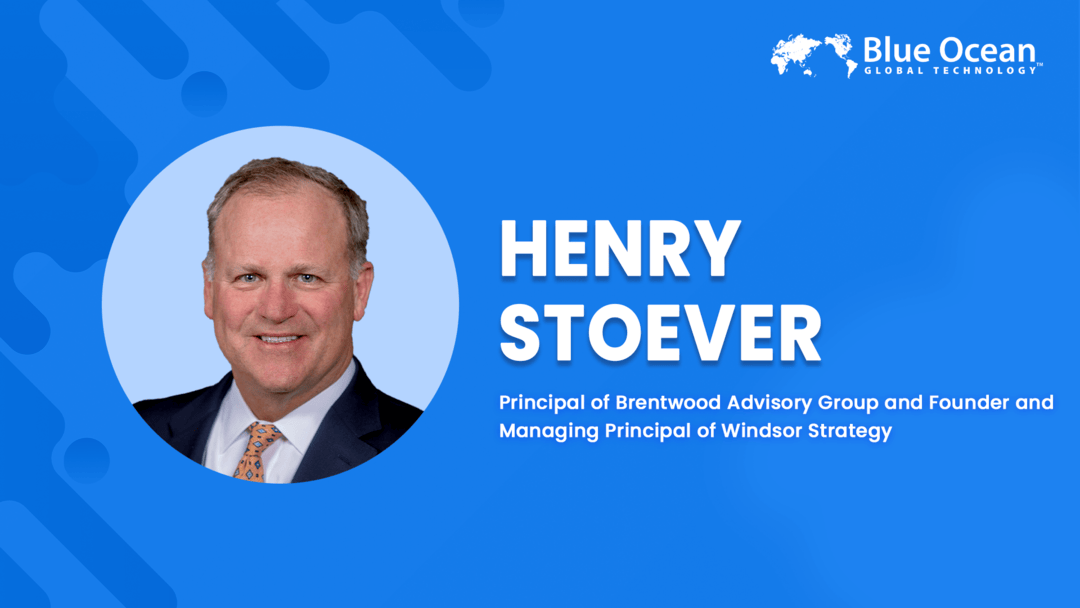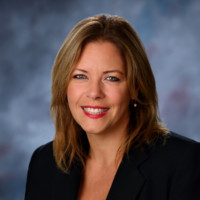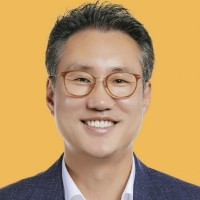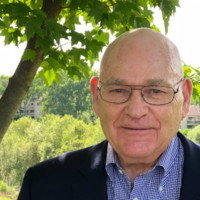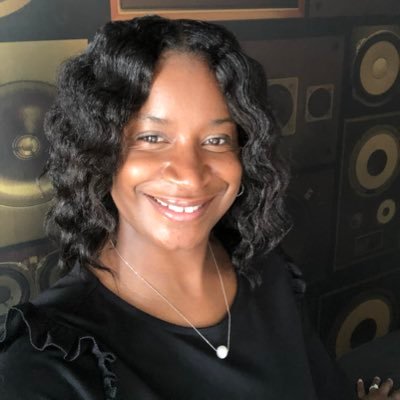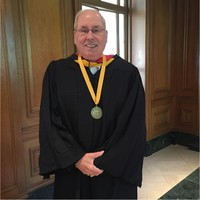About Henry Stoever

Henry Stoever is a Principal with the Brentwood Advisory Group and the Founder and Managing Principal of Windsor Strategy, where he empowers leaders from middle-market companies and nonprofit organizations to navigate complexity and address migraine issues. He and his team create consequential boards, align high-performing teams, shape outcome-focused communication strategies, and execute go-to-market plans to grow revenue and raise funds. Using the TCPS (Teams, Customers, Products, Strategy) model, they infuse the “voice of the stakeholder” to sharpen relevance, increase value, and deliver exceptional outcomes.
Tell us about your professional life. What inspired you to build a career in strategic consulting and leadership development?
I went to college at the U.S. Naval Academy in Annapolis, Maryland, and then served for five years in the United States Marine Corps. I joined the Marine Corps to protect the freedoms and values of our country and its allies. After being deployed for the majority of my time in the service, I decided to voluntarily resign from the Marines to be a present father and pursue a business career.
After leaving the military, I began my business career at Kraft Foods in brand management and earned an MBA at Northwestern University’s Kellogg Graduate School of Management in Chicago. I went into brand management because I wanted to learn how to run a business. I was drawn to marketing, communications, business development, partnerships, and product innovation. I was fortunate to work at Kraft Foods, where I achieved what I set out to do—I learned how to manage a business. I gained experience managing P&Ls, collaborating with sales teams, product development, operations, and more.
![Henry Stoever [Founder and Managing Principal, Windsor Strategy & Principal, Brentwood Advisory Group]](https://www.blueoceanglobaltech.com/wp-content/uploads/2025/06/Stoever-headshot-3-large-1-226x300.jpg)
After working in consumer packaged goods (CPG) marketing at Kraft Foods for 7 years, I transitioned to technology marketing and led marketing teams at LexisNexis, Sprint-Nextel Communications (now owned by T-Mobile), and CoStar. I applied my customer- and outcomes-focused approach that I learned at Kraft Foods, and again, my teams and I delivered results that exceeded stakeholders’ expectations.
The third phase of my professional journey was with nonprofits. I joined the Brazos Higher Education Service Corporation (a nonprofit student loan finance organization) as a Senior Vice President focused on building and launching StudentLoans.com – an e-commerce student loans platform, from scratch, i.e., starting with just a URL on paper. After just two years, StudentLoans.com became the #4 most-frequently visited student loans website, ahead of many larger companies.
After U.S. Federal regulations within the Affordable Care Act (ACA) restricted non-governmental organizations from originating student loans, I joined the NACD (National Association of Corporate Directors). This experience serving members and stakeholders in the nonprofit association market was amazing! While I did not have association experience before 2010, a friend encouraged me to meet their CEO, saying, “Henry, I think you’re really going to like him.” At first, I was hesitant. I thought, “I’m not a nonprofit leader; I’m a public company growth driver.” But I met with the CEO, a retired partner from KPMG, and we immediately clicked. Within a short period, I accepted the job.
We were aligned on three things: values such as collaboration, business orientation such as growth and innovation, and member satisfaction. He told me, “Henry, I’m going to hire you because we’ve got the best steak in town, but no one knows it. I want you to go tell all the steak eaters we’ve got the best.” Even though he was an accountant, he was an incredible storyteller—and I still remember that conversation 15 years later.
As a result of that alignment, we increased NACD’s revenue by more than +200% and grew membership by more than +35% in seven years. It was an amazing experience.
After serving as chief marketing officer at NACD for 10 years, I was invited to lead the Association of Governing Boards of Universities and Colleges (AGB) as President and CEO. The board brought me on because many of them had been members of NACD and had seen our growth, engagement, satisfaction, and brand-building efforts firsthand. They said, “Henry, come over here and do the same thing you did at NACD.” So I did.
My amazing team at AGB and I increased enterprise-wide revenue by more than +40% over four years and expanded membership by almost +20%. It was another incredible chapter in my journey of leadership, growth, and impact.
More recently, I was invited to join the Brentwood Advisory Group—a group of retired and former C-suite leaders who provide interim and fractional consulting services. I thought, “The kids are out of college, out of the house, and I’ve got more flexibility—why not?” Given my nonprofit experience, I decided to focus on helping nonprofits drive growth and impact. Along the way, many middle-market private companies reached out and asked for help, too.
Today, about two-thirds of our work is with middle-market private companies, and one-third is with nonprofits. The common thread is this: You must have a growth-focused mindset. Growth requires change. Change requires work. And meaningful work requires strong partnerships.
![Henry Stoever [Marine Corps]](https://www.blueoceanglobaltech.com/wp-content/uploads/2025/06/Stoever-Marine-pic-1-1-300x209.jpg)
What does a typical day look like for you as a Principal at the Brentwood Advisory Group and the Founder and Managing Principal of Windsor Strategy?
My day usually revolves around two main areas: my current clients and potential new clients. About half of my workday is spent helping current clients work through complex issues—the kind of “migraine” problems that keep them and their boards up at night.
Spending that time with them is crucial because, like any relationship, the more you invest, the more trust you build. And it’s through that trust and those deeper relationships that you can really start peeling back the layers to understand the true challenges they’re facing. Often, at the beginning, they’re not going to lay out all the “dirty laundry,” so it takes time to get to the heart of the issue.
The other half of my day is focused on prospecting—identifying new leaders and organizations that are also wrestling with “migraine” issues. It’s about showing them how my team and I can help. When I say “my team,” I’m referring to a network of talented colleagues with different areas of expertise—like web development, digital marketing, public and media relations, technology, and strategic planning.
Outside of my professional work, my day always starts with some form of exercise. Whether it’s a walk with the dogs around the neighborhood, a workout at the gym, or a run, physical activity clears my head and sets me up for a more productive day. I also make time to connect with my wife and check in with my kids—that personal connection is really important to me.
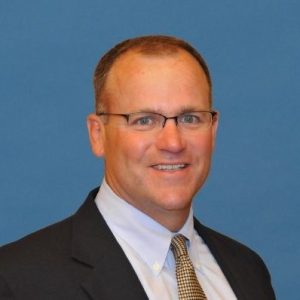
What trends in stakeholder engagement and strategic leadership are you most excited about, particularly in nonprofit growth, revenue generation, and mission-driven impact?
This is a really important question, especially when the current climate, with the federal government’s recent and significant funding changes and the introduction of tariffs, isn’t exactly generating excitement for many in the for-profit and nonprofit sectors. We are seeing a lot of shifts that are causing real concern.
Many nonprofits, particularly those focused on vital missions like feeding the hungry, housing the homeless, assisting immigrants, and providing education, have been relying on federal funding. Over the decades, this funding has grown substantially.
I have a client, who is also a friend, running a significant nonprofit in the Midwest, and the impact of these changes is stark. He’s facing the very difficult prospect of laying off potentially half or more of his staff if they can’t find alternative support, simply because their funding has been primarily from the federal government. This situation, driven by governmental funding changes and now tariffs, represents a major challenge impacting our economy, nonprofits, and individual lives—and frankly, it’s not an exciting trend.
However—and this is where I find a sense of opportunity—my company focuses on helping leaders navigate complexity to solve significant “migraine” issues. Right now, every nonprofit that has depended on this traditional funding is experiencing a massive migraine: the fundamental question of survivability.
This challenging environment presents a significant opportunity for us to help these organizations figure out how to navigate this complex landscape. A key trend I’m excited about is the necessity for nonprofits to diversify their funding sources and engage with stakeholders in new and strategic ways. For example, we’re actively connecting our clients with other potential funding avenues.
Think about the Bill and Melinda Gates Foundation—the largest global nonprofit. While I’m not suggesting they’ll just open their coffers wide, there are numerous well-intentioned foundations and individual philanthropists who are increasingly willing to support impactful missions. The challenge for nonprofits, as you pointed out, is that if the door to federal funding closes or significantly narrows, they must either scale back operations and staff, deplete their reserves, or proactively seek and open new doors to funding.
This push towards diversification and innovative stakeholder engagement is what I find exciting. It’s forcing nonprofits to become more resilient, creative, and strategic in how they connect with a broader range of supporters. This includes not only foundations but also individual donors through various means like recurring giving programs, peer-to-peer fundraising, and leveraging digital platforms to build a strong social presence and engage their communities. Exploring earned income opportunities, like offering services or products aligned with their mission, is also becoming increasingly important.
![- Henry Stoever [U.S. Naval Academy]](https://www.blueoceanglobaltech.com/wp-content/uploads/2025/06/Stoever-USNA-Pic-1-208x300.jpeg)
So, while the immediate cause of this shift isn’t exciting, the resulting innovation and strategic evolution within the nonprofit sector—driven by necessity and a renewed focus on diverse stakeholder engagement—is definitely something I’m excited to be a part of.
You’ve built a reputation for driving transformational change through alignment strategies and high-impact leadership coaching. How have you differentiated yourself and your team in this competitive landscape?
The first way we’ve differentiated ourselves comes down to our model – the TCPS model, which stands for Teams, Customers, Products, and Strategy. My team and I use this model to help our clients address “migraine” issues in a clear, step-by-step way.
Especially in a crowded space, standing out requires offering something truly distinct. Our approach is to use memorable and unique language and frameworks. Think about it – how often in your experience do you hear someone talk about “navigating complexity to address migraine issues”? People remember those kinds of unexpected phrases. That’s intentional.
But it’s more than just catchy words. The core of our differentiation lies in the TCPS model itself because it addresses what I see as a fundamental “two-sided equation” in the marketplace. It’s like a two-sided coin but with more depth. On one side, you have the human element – the people. That’s why we start with the first P (People) and the C (Customers). These are all about the human side of the equation. Then, we move to the other side, which is all about strategies and operations – that’s where P (Products) and the S (Strategy) come in.
So, the way we’ve tried to set ourselves apart is through how we communicate our value, how we actually create that value with the model, and ultimately, how we deliver value in a way that’s both meaningful and has a real impact.
![Dr Solange Charas [Founder of HCMoneyball] Dr Solange Charas [Founder of HCMoneyball]](https://www.blueoceanglobaltech.com/wp-content/uploads/2025/05/1660069844837-1.jpg)
In an increasingly complex business and nonprofit environment, what unique value do you and your team bring to organizations seeking to optimize leadership effectiveness, stakeholder satisfaction, and financial sustainability?
I will build on the TCPS model I mentioned to give a deeper understanding of what my team and I bring. TCPS is a two-sided approach that involves both the people side and the strategy and operations side. There’s a pyramid that visually explains this on my website. That pyramid has four layers, and while part of the website talks about TCPS, that pyramid lays out the key areas we focus on: boards, leadership teams, outcomes-focused strategies, and go-to-market high-impact communications and plans.
And so, that’s really how we try to create and deliver value to help our clients achieve significant results. But again, the core of our approach is to get the humans aligned with the strategy—specifically, the leadership team’s strategy. Now, not every organization has a board of directors; for instance, I don’t think Blue Ocean Global Technology has one. But every nonprofit does, and every private company that’s taken on external investment has a board, so they need that oversight.
I have learned that no organization can outperform its board. So, if you have a board of directors that’s disengaged and doesn’t have much impact, you’re likely going to see a company that’s also disengaged and doesn’t achieve significant impact. Similarly, if your team isn’t well aligned, your results just won’t be as successful as you’d like them to be. And if your strategies aren’t outcome-focused—and by that, I mean a clear combination of qualitative and quantitative outcomes—then it’s often just a lot of nice-sounding words without real direction.
We believe in saying, “Hey, being outcome-focused means by the end of 2025, we will have doubled the size of the company, positively impacted a thousand people, and helped them grow their revenue by 32%.” It’s different from just saying, “We’re going to help companies do better, and we’re going to help them develop better teams, customers, products, and strategy.” That’s all just words. Outcomes include timeframes, quantities, specific values, etc. So, that’s fundamentally how we try to create and deliver value for organizations.
What advice would you give to your younger self when you were first stepping into leadership and consulting roles?
Dream big and have no fear. As you get older, you can start to get bogged down by experience, and that experience can sometimes make you think, “Oh gosh, I can’t do that because of this,” or “Oh gosh, that’s not possible because of that.” But when you’re just starting out, you don’t have all that mental baggage. So, yeah, dream big and have no fear.
I will share an example that stuck with me. I met this founder, not someone I consulted with, but he built a company that’s almost a billion dollars now. He created a sports drink when he was only 23. He’s now maybe in his late 40s or early 50s. He told me, “I am so glad I developed that product when I was so young because I would have been afraid if I knew what I know now—for instance, that McDonald’s has an exclusive partnership with Coca-Cola…” His dream at the time was to get his product into McDonald’s because they have like 50,000 locations worldwide.
But back then, he didn’t know about that exclusive deal. So he had no fear. He just dreamed big. He thought, “I want to create a product that everyone around the world will embrace, and you’ll find it in grocery stores, convenience stores, restaurants—everywhere.” And he did it. He figured out a way to make it happen, and part of how he got into McDonald’s eventually was because Coca-Cola ended up buying his company. But the core of it is: dream big, have no fear.
Even today, that idea resonates with me. My big dream is to help a thousand clients and a million leaders tap into their full potential. That’s why I’m so passionate about purpose-driven leadership. I truly believe that leaders who are driven by purpose help others achieve their fullest potential.
My dream is to motivate a million people. There are eight billion people in the world, so maybe a million isn’t such a crazy number. It’s at least a start.
What are some hobbies or interests that bring you joy and balance outside work?
What helps me stay balanced—or attempts to get me balanced—are my five Fs: faith, family, fitness, friends, and fun. I try to pray every morning—faith has become an important part of my life and remains so.
Then there’s family. I’ve got five kids, aunts and uncles, in-laws, and a brother and a sister. I need to stay connected with them. Fitness is another big one. As I mentioned earlier, I try to get up early, and I have a routine: some social media, some meditation, some prayer, some reading, and then I hit the gym. I also have lots of friends—and then fun.
For something more specific, my favorite hobby is scuba diving. I have scuba dived in the Mediterranean, all over the Caribbean, the Bahamas, and the U.S.
I also love to play golf. I’m not very good at it, but I enjoy it because it helps me kind of combine my five Fs. I enjoy fishing and sailing as well. If you look at my website, you’ll see a bunch of sailboats which reflect my passion for the water.
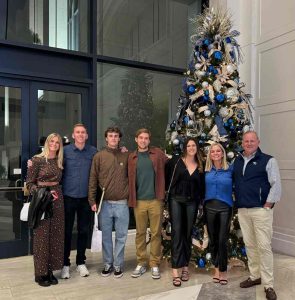
Is there a quote or philosophy that has guided you through your career and personal life?
I have two guiding quotes. Firstly, my mother passed away last year. She was a huge inspiration to so many. She once told me, “Henry, attitudes are infectious.” And she believed that your attitude is the one thing you truly have control over.
You definitely can’t control other people. You can try to influence your health, but you can’t always control it completely. But your attitude? That’s yours. And it spreads to others. Even as she got older, if someone asked her how she was doing, she’d always say, “Could not be better.” She might not have always meant it, but she always had a sparkle in her eye.
The second one is from the West Point Cadet Prayer (I went to the U.S. Naval Academy, which is like the Navy’s version of the U.S. Military Academy at West Point, New York). The prayer has a line that says, “Make us choose the harder right instead of the easier wrong, and never to be content with a half-truth when the whole can be won.” It would be amazing if everyone thought about that—choosing the tougher right over the simple wrong and always seeking the complete truth.
Conclusion
Henry Stoever’s journey, shaped by purpose, resilience, and a deep commitment to people and outcomes, offers a compelling blueprint for modern leadership. Whether guiding organizations through strategic growth or diving into one of his five Fs for personal balance, Henry leads with intention and heart.
Do you have a personal or professional story that can inspire other people into becoming the best version of themselves?
You are welcome to share your journey with our audience.

